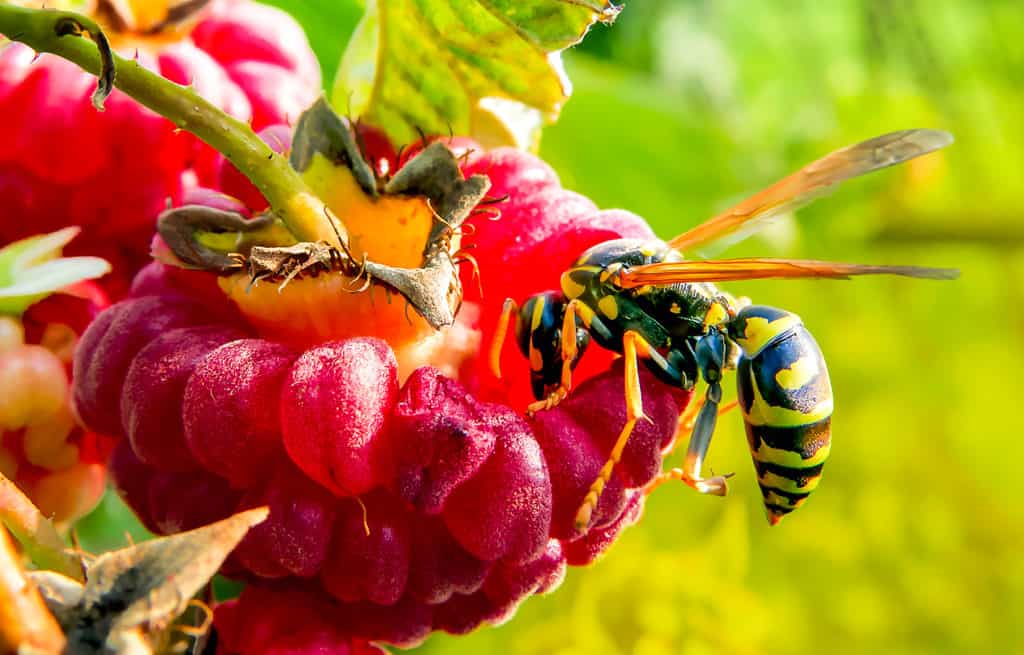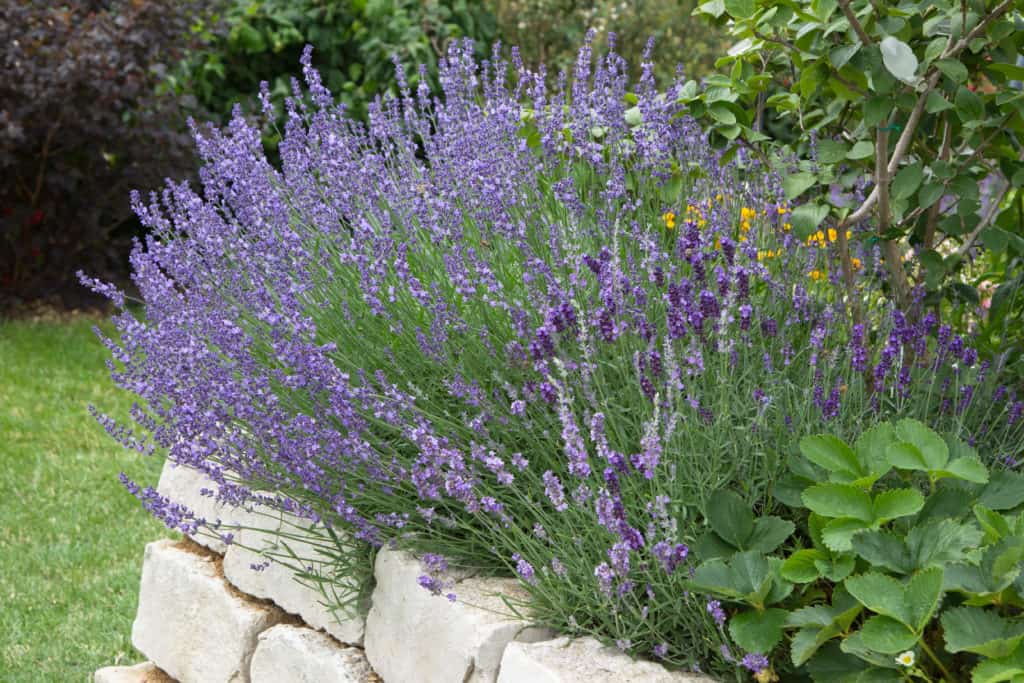Gardening and Pest Control
Gardening and Pest Control
How Your Garden is a Vital Piece of the Pest Control Puzzle
Gardens are such a beautiful embrace of our local environments. But, being part of the local environment means it is susceptible to the local wildlife. Some of the wildlife is extremely beneficial such as honeybees who help with pollination, while other insects are not so helpful. Depending what is in your garden, you could be either repelling or attracting destructive/pesky pests to your yard.

Yard Maintenance
The following are some conditions of gardens and yards that can be inviting or prolonging pest issues/infestations around of even in your home, and how we recommend addressing them as a form of prevention.
- Unkempt Garden/Messy Yard – Dead or dying foliage and leaves collected on the ground of your property can act as insulation against the cold weather, making it a prime spot for pests to hide. Remember to try to remove such piles from the ground to prevent an insect party from forming by your home. These leaves can also block our pest control treatments from effectively reaching the critters if left unattended.
- Standing Water – Pests need moisture to thrive. So, when water pools around your flower beds and in your garden, you’re at risk of encountering more pest-issues. Make sure your home’s downspouts are properly draining and that no debris is blocking/clogging the water flow in any nearby drains you may have. Also, make sure to change out any pet water bowls frequently and clear out bird baths or any other source of standing water in your yard (this is particularly vital for mosquito prevention as their eggs hatch in still water).
- Birdfeeders – Most gardens are also home to beautiful birdfeeders. While this is a great addition to any yard, fallen birdseed can create quite the pest problem. Birdseed that collects on your deck or nearby the side of your home may be attracting rodents to your property, ultimately encouraging them to linger around, and even enter your home. Make sure the ground around your birdfeeder is kept as tidy as possible so that the extra seed isn’t attracting any unwanted guests.
- Hide and Seek – Moles, voles, rats, mice and the like all LOVE to find places to hide in your garden. They seek out areas with heavier foliage, dead leaves or branches, and even wood piles. Not only are these great areas to hide, but they can even use these areas to nest so it is helpful to keep these densely covered areas to a minimum. Try cutting back bushes, pulling weeds, raking up leaves and dead plants, keeping your lawn well mowed and bushes trimmed so that they do not touch the ground.
- Highways to Your Home – Trim back any trees or bushes that may be touching your home or shed. While seemingly harmless, the branches act like a highway for squirrels, mice, and raccoons – taking them straight from your yard onto your roof and, once there, these unwelcome guests often find a way to burrow into your attic and home.
- Planters – Unfortunately, planters act as potential nesting sites for ants, making your home at risk of an ant invasion. Check your planters and clean them out regularly if you notice any pest activity.
- Mossy Mess – Moss is actually a food source for many species of ants and when it is present on your garden fence, logs, stumps, trees, etc. it could potentially be attracting more ants towards your home. Try your best to scrape up any moss in these areas.
- Wood Piles – Whether its insects or rodents, are like a haven for pests, inviting them to come gather and build nests or homes. As such, it is important to make sure that wood piles are at least 30 feet from your home if possible. This will deter any pests that gather in that wood haven from entering your home and disrupting your life.
- “Doody” Free – Unfortunately, our furry family members deposit their doodies in our yards and gardens, and it is important to remove the deposits as soon as possible. Disgustingly, dog poop is actually a major food source for rats. The feces is only 60% digested leaving behind a source full ofvitamins… including the antidote to the anticoagulant poison in our bait blocks: Vitamin K. Take care to remove your pup’s droppings from your yard. Taking this measure will both help prevent the attraction of rats to your home and prevent the consumption of the droppings counteracting the anticoagulant bait blocks we use in our rodent stations.

Plants that Keep Pests Away
Just as your garden can be an attractant for pests, it can also repel them just as effectively if you are growing the right stuff. The following are some all-natural ways that your garden can help you stay pest-free.
- Citronella – Citronella is well known for being a powerful mosquito repellant, however, further studies have suggested that it may discourage rats and pests from approaching your home as well.
- Mint – Mint has been proven to help repel mosquitos, rodents, and other pests.
- Lavender – Lavender is known to attract helpful pests such as honeybees, but is known for repelling spiders, mosquitos, and a few other nasty pests.
- Eucalyptus – A study published in The Scientific World Journal in 2014 proved that Eucalyptus is effective at repelling rats. Other studies have similarly shown that, when combined with lemon, it can also help repel flying pests.
- Lemongrass, Clove, Thyme – all of these plants have been known to help ward off biting mosquitos.
Stay safe, stay pest-free!

Citations
Neverman, L. (2020) Natural Pest Control in the Garden – Get Rid of 20 Top Pests, Common Sense Home. Available at: https://commonsensehome.com/natural-pest-control-in-the-garden/ (Accessed: November 2020).
Roberson, K. (2020) 10 Common Garden Pests to Watch for an How to Get Rid of Them, Better Homes & Gardens. Available at: https://www.bhg.com/gardening/pests/insects-diseases-weeds/garden-pest-control/ (Accessed: November 2020).
Thind, R. and Mahal, A. (2014) “Potential of Eucalyptus Oil as Repellent Against House Rat ,” The Scientific World Journal. Edited by M. Todaro. doi: https://www.hindawi.com/journals/tswj/2014/249284/.
Voles (2020) Farmer’s Almanac. Available at: https://www.almanac.com/pest/voles (Accessed: August 2020).
What Are the Best Natural Mosquito Repellents? (2019) Medical News Today. Available at: https://www.medicalnewstoday.com/articles/325337 (Accessed: June 2020).
Yoo, C. (2020) 12 Mosquito Repellent Plants, Garden Design. Available at: https://www.gardendesign.com/plants/mosquito-repellent.html (Accessed: June 2020).
8 Creative Ways to Have a Pest-Free Fourth of July
8 Creative Ways to Have a Pest-Free Fourth of July 8 Creative Ways to Have a Pest-Free Fourth of July Summary: The Fourth [...]
A Simple Guide to Preventing Stinging Pests
A Simple Guide to Preventing Stinging Pests A Simple Guide to Preventing Stinging Pests Summary: Stinging insects are more active in warm weather, [...]
These 10 Natural Mosquito Repellents Can Actually Help
These 10 Natural Mosquito Repellents Can Actually Help These 10 Natural Mosquito Repellents Can Actually Help Summary: Natural mosquito repellents are easier to [...]
How to Get Rid of Carpet Beetles
How to Get Rid of Carpet Beetles How to Get Rid of Carpet Beetles Summary: Carpet beetles are sneaky pests that don’t usually [...]
How Do Roaches Affect Asthma and Allergies?
How Do Roaches Affect Asthma and Allergies? How Do Roaches Affect Asthma and Allergies? Summary: It’s no secret that pests impact human health, [...]
These 5 Carnivorous Pests Might Surprise You!
These 5 Carnivorous Pests Might Surprise You! These 5 Carnivorous Pests Might Surprise You! Summary: There are many eco-friendly ways to prevent pests, [...]

